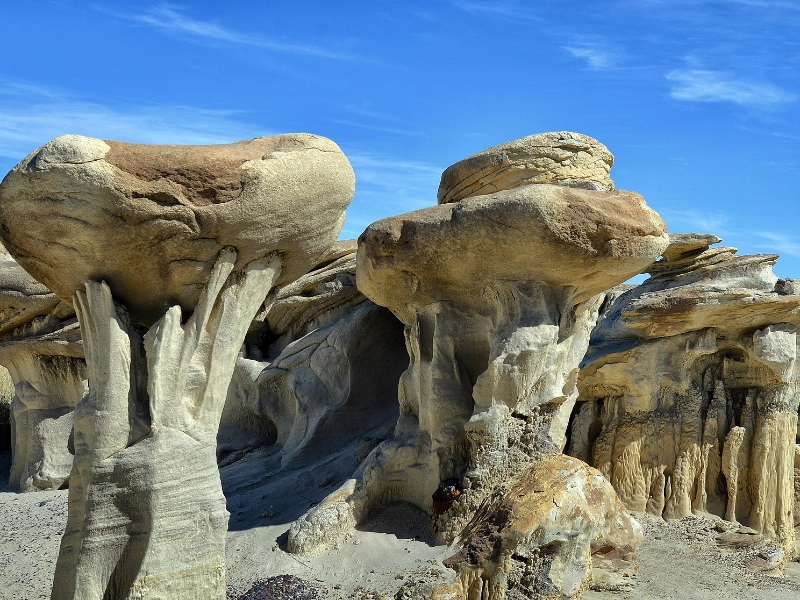10 Geological Oddities That'll Blow Your Mind (and Maybe Your Geography Teacher's Too!)
Advertisement
6. The Eye of the Sahara: Mauritania's Geological Enigma

Advertisement
A monument to the Earth's geological complexity, a remarkable circular feature called the Eye of the Sahara or the Richat Structure stands in Mauritania, in the middle of the Sahara Desert. Easily seen from orbit, this massive feature—which spans around 40 kilometres (25 miles—is so clear and distinct that it like a big bull's-eye carved into the desert terrain. Although many people for years thought its flawless round form was the consequence of a meteorite collision, careful scientific study reveals a far more complex and intriguing origin story.
Early on in space exploration, the Eye of the Sahara gained popularity when satellites and astronauts photographed its odd shape. Both geologists and the general people were immediately intrigued and debating its almost flawless concentric rings of many colours and textures. Because of its circular form, the first theory of an impact crater was convincing; nevertheless, as closer study of the structure revealed, there was little evidence of the strong shock metamorphism usually connected with meteorite strikes.
Rather, geologists today think the Richat Structure is a profoundly degraded tectonic dome. About 600 million years ago, at the late Proterozoic to early Cambrian epoch, this dome started to develop. Melted rock surged from deep beneath the Earth during this period, forcing the surrounding sedimentary rock strata to swell upward. The magma never cracked, though, to produce a volcano. Erosion has progressively removed the softer top layers over millions of years, revealing the stronger, more resistant rock underneath and producing the concentric pattern we see now.
The several circles the Eye of the Sahara shows match different kinds of rock. Ordovician sandstone forms most of the outermost ring. Turning within, one finds different volcanic rocks and rings of Proterozoic quartzites. A core of coarse-grained igneous rocks—including rhyolite volcanic rocks, gabbros, and carbonatites—lies at the centre of the formation. With each rock type eroding at various rates and reflecting light differently, this varied geological makeup helps to contribute to the remarkable visual attractiveness of the structure.
Not only is the Richat Structure fascinating from its origin but also from its ideal circular form. The Eye of the Sahara has kept virtually complete circular form while many eroded domes are more elliptical because of unequal erosion or underlying geological formations. Though this theory lacks scientific evidence, some academics have hypothesised about the likelihood of this symmetry being a mega-fossil of some ancient living form.
Understanding the geological past of the Sahara also depends much on the Eye of the Sahara. Geologists can assemble the climatic conditions and tectonic activity that moulded this section of Africa over hundreds of millions of years by examining the exposed rock layers and their interactions. The framework offers a unique view into the past of the Earth, information on ancient climates, continent movement, and the forces sculpting the surface of our world.
The Eye of the Sahara's isolated location in the Sahara Desert makes it still rather unknown to the general public and challenging to reach despite its scientific importance and scenic attractiveness. Still, it enthrals researchers, aficionados for space, and occasionally daring visitors who can see this geological marvel close-up. New approaches of researching the Richat Structure, such high-resolution satellite imagery and sophisticated geophysical techniques, promise to open even more secrets about this mysterious feature and maybe throw light on comparable structures elsewhere on Earth and other planets as technology develops.
Advertisement
You May Like

